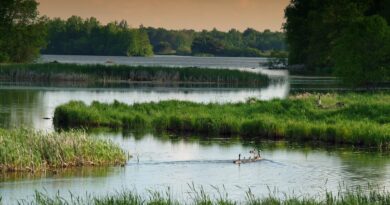MSU Researchers Build Connection Between Forests and Drinking Water
Researchers from Michigan State University discover untapped potential in forests.
According to Michigan State University, in 2022, Emily Huff, an associate professor in the Department of Forestry; Asia Dowtin, an assistant professor in the Department of Forestry; Emily Huizenga, a former master’s student in the Department of Forestry; and Jo Latimore, an aquatic ecologist and outreach specialist in the Department of Fisheries and Wildlife, published their findings on how stakeholders view forests for their ability to provide clean drinking water in the Journal of American Water Resources Association.
Stakeholders in this study were broken into seven categories: water consumers, water utility providers, forest landowners, industry partners, policymakers, local governments and nonprofit organizations. Huff said the team hypothesized that people wouldn’t connect forests to their ecological service — a benefit that ecosystems provide to humans — of yielding clean drinking water, which she said was confirmed through her team’s research.
“Generally speaking, most people understood that where there are forests, there’s cleaner and more abundant water,” Huff said. “However, they didn’t make the functional link that conserving forests results in cleaner drinking water.
“The conclusion we came to for why this is, is partly because Michigan is varied when it relates to where water comes from and flows to throughout different watersheds. There’s a huge focus on overall Great Lakes water quality, but maybe less so specifically on drinking water.”
Moreover, Huff said that unless people have a well, many don’t know where their drinking water comes from or how (and how much) forests contribute to clean water.
According to the U.S. Forest Service, more than 150 million people in the U.S. rely on forests to filter drinking water. In Michigan, 56% of residents get their drinking water from surface water, while 44% get it from groundwater, as reported by the Michigan Department of Health and Human Services.
Forests aid in the purification of drinking water through multiple processes. Tree leaves and branches buffer heavy rainwater from the forest floor and inhibit the erosion of sediment into bodies of water, sheltering surface water from pollution. As rainwater soaks through the soil as groundwater, it’s filtered through tree roots which absorb nutrients.
From their findings, Huff said there’s now data showing an opportunity — or “untapped potential” as it’s described in the title her team’s published research, “Untapped Potential: Do Stakeholders Value Forests for Providing Clean Drinking Water?” — to educate people on the direct impact forests have on drinking water.



